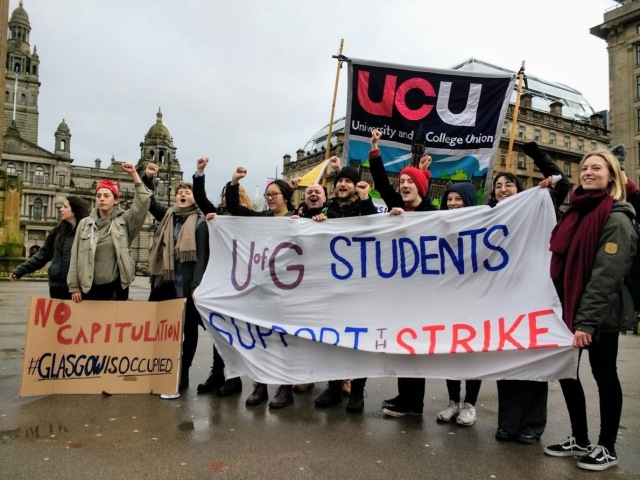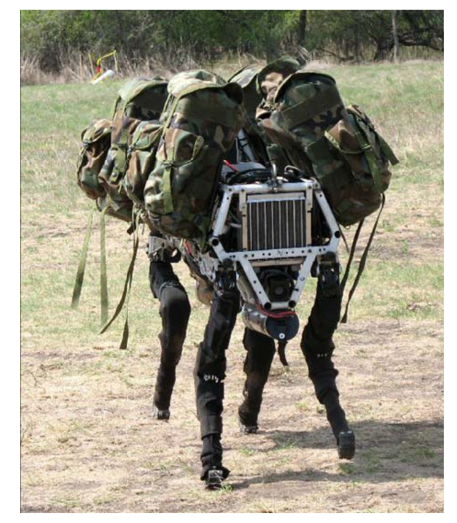Taken from Predator Empire, Chapter 3: Full-Spectrum Dominance of the Globe https://www.upress.umn.edu/book-division/books/predator-empire
From soil, to sea, to outer-space: the final frontier of the Predator Empire lies beyond the breathable atmosphere of human existence in the extraterrestrial orbits where only machines survive. This final section explores the satellites, missiles, and strategies that have foregrounded what can only be described as the growing materialization of a “space war” in the corridors of the Pentagon. Outer space, like the ocean, is part of the same “full-spectrum domination” strategy pursued by the U.S. military. The Global Positioning System (GPS) of satellite navigation is central to nearly everything the modern military does and has revolutionized drone warfare by enabling precision reconnaissance and targeting. Orbital space infrastructures, in short, enable the U.S. military to “see” and “communicate” across the planet.
The Cold War saw a protracted period of research into space technology by Soviet and American scientists. Sputnik, the Soviet satellite launched in 1957, was the first artificial Earth-orbiting satellite and propelled the Cold War space race. Sputnik was carried into space by the R-7 launch vehicle, the world’s first intercontinental missile (ICBM). Over a decade prior to that, however, RAND (then part of Douglas Aircraft Company) was investigating the launch of satellites in an important 1946 paper called, “Preliminary Design of an Experimental World Circling Spaceship.”[i] Indeed, in many ways, the roots of the looming space war actually date back to the V-2 rocket used by the Nazis, which influenced early missile designs in the U.S. and the USSR. The first American ICBM was the SM-65 Atlas missile, which began unsuccessful test flights in 1957.
As well as offensive capabilities, both the U.S. and the USSR began to construct defensive systems. This includes anti-ballistic missiles, or ABMs, together with ABM complexes that monitor incoming missiles. The development of these kinds of ABMs was restricted by the 1972 Anti-Ballistic Missile Treaty, signed by President Nixon and Soviet Secretary General Brezhnev. The agreement prohibited a nation-wide missile defense system. It did, however, allow the U.S. to build the Safeguard ABM Complex in Grand Forks, North Dakota. In 1976–a year after the Safeguard site was constructed–the entire program was shutdown.[ii] As it turned out, the system could be easily blinded if its radars were destroyed (a problem that hasn’t really gone away).
The aerial bombardment of Serbia, from March 24 to June 10, 1999, was one of the first major “space-enabled” wars due to heavy reliance on satellites. For NATO this period was officially known as Operation Allied Force, and Operation Noble Anvil for the U.S. military. While the Serbian military was ultimately subdued by precision U.S. airpower, Operation Noble Anvil revealed a paradox that still haunts the U.S. military today. As the Pentagon has become ever more reliant on space-based technologies, it has also become more vulnerable. Without the eyes and ears the satellites now provide, the military’s high-tech systems would be “blind.” In spite of, or perhaps because of this unwelcome paradox, the determination to militarize outer space has accelerated over the past two decades. As Johnson writes, “the United States now argues that it must totally dominate space to protect its new, casualty-free war-fighting technologies.”[iii]
On March 23, 1983, President Ronald Reagan delivered a national address that energized the anti-ballistic missile race and shattered the restraints of the previous administration. Reagan, who had campaigned to develop an ABM system, urged the U.S. to redouble its efforts. As he resolved, “I am directing a comprehensive and intensive effort to define a long-term research and development program to begin to achieve our ultimate goal of eliminating the threat posed by strategic nuclear missiles.”[iv] This ambitious project would become the Strategic Defense Initiative (SDI), overseen by the Strategic Defense Initiative Organization (SDIO). SDI was built on the idea of a planetary-wide defense shield that could intercept incoming Soviet ICBMs with ground-based missiles and orbital lasers. The proposal would be mocked as an unrealistic “Star Wars” fantasy and eventually collapsed. But this misses two important points. First, SDI paved the way for billions of dollars’ worth of defense spending and research. Second, it was the first step in militarizing space and enclosing the planet.
During the 1990s, the conceits of cosmic power continued. In 1993 the SDIO was renamed the Ballistic Missile Defense Organization. Rather than engineering a global shield, the Clinton administration shifted its ABM strategy to focus on regional threats and “rogue nations.” Of course, the collapse of the Cold War should have ended the project. But there were too many vested interests. The Republican-controlled Congress accelerated anti-ballistic spending despite the enormous costs. Conservative defense hawks were convinced that the collapse of the USSR had everything to do with U.S. technological power, and that throwing more money at missile technology “was a sure way to achieve perpetual domination of the world.”[v] Missile lobbying came from the powerful right-wing think tank, “Center for Security Policy,” which was funded by major weapons contractors and served as “the de facto center of the Star Wars lobby.”[vi] Frank Gaffney Jr. was the founder of this group and an important figure in the weaponization of the atmosphere during the 1990s. So too was Republican Curt Weldon, a board member of the Center for Security Policy. He obtained a resolution to create a Congressional committee to assess the ballistic threat posed to the U.S. [vii] It was time to scare American lawmakers.
The Commission to Assess the Ballistic Missile Threat to the United States was chaired by Donald Rumsfeld.[viii] Their 1998 report was heavily influenced by the military-industrial complex. Controversially, the “Rumsfeld Commission,” as it was known, contradicted a 1995 National Intelligence Estimate that a “rogue nation” would need ten to fifteen years to build a ballistic missile. The report warned that “rogue nations” could acquire these capabilities within five years. “In essence, the Rumsfeld panel gave Star Wars boosters in Congress the quasi-official endorsement they needed to push the program forward.”[ix] By this point in time, the U.S. had already sunk $50 billion on anti-ballistic systems, none of which had proven workable.[x] The report’s findings were leapt upon by proponents of a national missile defense shield, leading to the passage of the National Missile Defense Act of 1999. This called for the U.S. to “deploy as soon is technologically possible an effective National Missile Defense system capable of defending the territory of the United States against limited ballistic missile attack.”[xi] President Clinton, however, deferred the deployment of the National Missile Defense (NMD) system. His reticence was unsurprising: an ICBM is incredibly difficult to stop effectively, given that the interceptor missile, or “exoatmospheric kill vehicle,” is easily fooled.
After Bush came into office with Rumsfeld as his secretary of defense, Star Wars was back on the table. In December 2001, the administration announced that it was withdrawing from the 1972 Anti-Ballistic Missile Treaty. On December 16, 2002, Bush signed National Security Presidential Directive-23 that instructed the Department of Defense to “deploy a set of initial missile defense capabilities beginning in 2004.” The directive stated that the missile shield must be global in scope: capable of defending the U.S. homeland, international forces, and even foreign allies, thereby eliminating “the artificial distinction between ‘national’ and ‘theater’ missile defense.”[xii] Reagan’s planetary vision from 1983 was back. Bigger and better than before, it would go by the name of “Ground-Based Midcourse Defense system” (GMD). Since testing began in 1999, ground-based ICBM defenses in the U.S. have been unreliable. The GMD, which cost billions of dollars, is no exception.
In January 2001, Rumsfeld chaired “The Commission to Assess United States National Security Space Management and Organization.”[xiii] Unsurprisingly, the commission was influenced by the missile defense lobby. While the report acknowledged it was in the U.S. national interest to use space for peaceful purposes, it also recommended the construction of space defense systems. These would provide the president with “revolutionary methods” for spaced-based intelligence. But moreover, orbital defenses could protect the U.S. from a possible “Space Pearl Harbor.” This incendiary phrase was repeatedly used to warn lawmakers that the military’s heavy reliance on space technologies had rendered it vulnerable to enemy attacks. There are, after all, approximately 1,200 satellites in space, of which over 500 belong to the U.S. Of these, an unknown number serve as “spy” satellites for intercepting foreign communications and photographing the planet.
“Space war” is now, after two decades of lobbying, a strategic concern. No other country has anti-satellite weapons in space, yet for U.S. galactic warriors, the enclosure of space is viewed as an inevitable future for the military. Outer space presents the U.S. military with the same kind of opportunity as the “black seas”–an environment devoid of direct sovereign control. There are no foreign governments to negotiate with and no need to adhere to legally binding SOFAs. “Best of all,” writes Johnson, “the weaponizing of space enables [the U.S.] to project power anywhere in the world from secure bases of operation. It is, by definition, the global high ground.”[xiv] One of the first documents laying out the U.S. military’s ambition was the “Vision for 2020,” published in 1997.[xv] The booklet argued that space was becoming the “fourth medium of warfare,” after land, sea, and the skies. As a consequence, space must be “controlled,” and if necessary, “denied” to foreign governments.
The United States Strategic Command (USSTRATCOM) has overall responsibility for space operations. It was established in 1992 as the successor to Cold War-era Strategic Air Command. Within STRATCOM, there are two important organizations for coordinating activity in space. First is the Air Force Space Command (AFSC), which employs 40,000 personnel and operates over 31 military satellites. Within the AFSC lies the main hub for space-based operations, the Joint Functional Component Command for Space (JFCC Space). Known as “Guardians of the High Frontier,” JFCC Space operatives support U.S. ground forces across the planet. Perhaps unsurprisingly, the Low Earth Orbit (LEO) is congested with space junk–from spent rocket boosters to globs of frozen sewage. By its own estimates, the Air Force Space Surveillance Network (part of JFCC Space) tracks around 23,000 objects every day (with hundreds of thousands of smaller pieces too small to track).[xvi] Given this space debris travel at tremendous speed, even minute fragments can severely damage and destroy satellites. This makes space war a disastrous proposition.
The U.S. 2010 National Space Policy affirmed its commitment to peaceful access to outer space. But it maintained that such “peaceful purposes” included using space for “national and homeland security activities.” As the report states, “The United States will employ a variety of measures to help assure the use of space for all responsible parties, and, consistent with the inherent right of self-defense, deter others from interference and attack, defend our space systems and contribute to the defense of allied space systems, and, if deterrence fails, defeat efforts to attack them.”[xvii]
In other words, the world’s premier space-faring nation affirms its status as the unilateral guardian of space, a galactic shepherd to the other nations that dwell in the upper and outer atmospheres. Similarly, the 2011 National Security Space Strategy argues, “Our military and intelligence capabilities must be prepared to ‘fight through’ a degraded environment and defeat attacks targeted at our space systems and supporting infrastructure. We must deny and defeat an adversary’s ability to achieve its objectives.”[xviii] Beginning in 2008, the U.S. established a multi-million dollar “Space Protection Program” to coordinate the defense of U.S. space assets. This “counterspace” program includes funding for satellite-jamming technologies to disrupt “adversary” communications, although this is rarely vocalized in public.
The National Reconnaissance Office (NRO) is the U.S. intelligence community’s “eyes and ears” in outer space (and as Chapter 2 detailed, was instrumental in the dronification of the Vietnam War). The NRO was formed by the Department of Defense in September 1961.[xix] For much of its history it was a classified agency until its existence was publicly revealed in 1991. Around 3,000 NRO personnel–drawn from the armed services, CIA, and other civilians–operate the U.S. fleet of spy satellites and deliver SIGINT and imagery intelligence (IMINT) to the other branches of the intelligence community. The NRO’s “black budget” in 2013 was at least $10.3 billion, forming part of what Barton Gellman and Greg Miller called an “espionage empire.”[xx] Publicly, the NRO states it provides “innovative overhead reconnaissance” for U.S. national security. But, as internal documents show, the NRO programs go beyond reconnaissance to collect and intercept global communications. As it states, “Space collection provides unique access to otherwise denied areas to provide persistent and responsive collection; and it does so without risk to human collectors or infringing upon the territorial sovereignty of other nations.”[xxi] In short, this is another reworking of the “high seas” doctrine.
The NRO’s first signals intelligence satellite was the 1960 GRAB, and its successor, POPPY, which intercepted Soviet radar communication until 1977. The first image intelligence satellite was the CORONA satellite, a system built in the late 1950s. Launched on August 18, 1960, CORONA’s first successful mission photographed 1.65 million square miles of Soviet territory. Interestingly, in the days before imagery could be remotely transmitted, film had to be stored in capsules and dropped back down to the planet. 3,000 feet of film was captured in this way.[xxii] Indeed, CORONA was so successful that it was used until 1972. For much of the Cold War, satellite intelligence from the NRO was used to record and estimate the number of missiles, planes, and submarines in the Soviet inventory. After the Cold War, the NRO supported the 1991 Operation Desert Storm in Iraq. Since then, the NRO has played a pivotal role in the U.S. war on terror and continues to launch spy satellites.
The radio transmissions NRO spy satellites intercept must be downloaded back on the ground. Two of the biggest “downlink” facilities are located in the UK and Australia, part of the worldwide surveillance network called ECHELON, or Five Eyes. Menwith Hill, in the English countryside, is the largest electronic surveillance station in the world and is a cornerstone of the U.S. Ballistic Missile Defense program. Despite technically being an RAF base, the site is run by the National Security Agency (NSA). Around 2,000 intelligence personnel and cryptanalysts, together with billion-dollar supercomputers, analyze the interpreted satellite data and transmit it to the NSA’s headquarters at Fort Meade in Maryland.[xxiii]
Pine Gap is the second-largest satellite downlink facility in the world. Built upon ancient Aboriginal land in Australia, the purpose of this remote base is to track the “geolocation” of radio signals and mobiles, pinpointing the whereabouts of enemy combatants in the Eastern hemisphere. The facility, instrumental to the war on terror, was established by a 1966 Australia-U.S. treaty. Around 1,000 personnel, mainly CIA, NSA, and NRO agents, control a set of geostationary satellites positioned above the Indian Ocean and Indonesia. The satellites are able to pinpoint the origin of a radio signal to within approximately 10 meters. “Initially Pine Gap was collecting information – it was, if you like, listening in. It’s now targeting weapons systems. It’s also very much involved in the targeting of drones,” explained former Australian Prime Minister, Malcolm Fraser, in 2014.[xxiv]
From the launch of the first satellites, space has been a “militarized” domain, providing the eyes and ears for the U.S. military and intelligence community. The future not only points to more intense forms of militarization but, potentially, more overt forms of weaponization–that is, the placement of orbital weapons into outer-space. This has yet to happen, although both the U.S. and China have anti-satellite capabilities. Some speculate that the U.S. military’s secretive X-37B unmanned orbital spacecraft is a space weapon of some sort, although its real purpose remains unclear.[xxv] U.S. Congress has approved a big increase in space defense for 2016, totalling $5 billion over the next five years. Of course, the majority of UN states are against any form of space weaponization. To a large extent, UN legislation already prohibits space weapons, stemming from the foundational 1967 Outer Space Treaty. A big question mark therefore hangs over whether this kind of legislation will be able to hold back the emerging weaponization of space.
[i] Douglas Aircraft Company, Preliminary Design of An Experimental World-Circling Spaceship, Report No. SM-11827, May 2, 1946.
[ii] Council on Foreign Relations, “Chronology of National Missile Defense Programs,” June 1, 2002, http://www.cfr.org.
[iii] Johnson, The Sorrows of Empire, 81.
[iv] Ronald Reagan, “Address to the Nation on Defense and National Security,” (speech, Oval Office, March 23, 1983), Ronald Reagan Presidential Library, http://www.reagan.utexas.edu.
[v] Chalmers Johnson, Nemesis: The Last Days of the American Republic (New York: Henry Holt and Company, 2007), 211.
[vi] William D. Hartung and Michelle Ciarrocca, “Push for Missile System Ignores Lack of a Real Threat,” Deseret News, January 28, 2001, http://www.deseretnews.com.
[vii] Johnson, The Sorrows of Empire, 212.
[viii] Report of the Commission to Assess the Ballistic Missile Threat to the United States, Executive Summary, Pursuant to Public Law 201, 104th Congress (Washington D.C., July 15, 1998).
[ix] Hartung and Ciarrocca, “Push for Missile System Ignores Lack of a Real Threat.”
[x] Eric Schmitt, “Panel Says U.S. Faces Risk of a Surprise Missile Attack,” New York Times, July 16, 1998, http://www.nytimes.com.
[xi] “National Missile Defense Act of 1999,” Public Law 106-38, 106th Congress, July 22, 1999, http://www.gpo.gov.
[xii] National Security Presidential Directive/NSPD-23, December 16, 2002, http://fas.org/irp/offdocs/nspd/nspd-23.htm
[xiii] Report of the Commission to Assess United States National Security Space Management and Organization, Executive Summary, Pursuant to Public Law 106-65, (Washington D.C., January 11, 2001).
[xiv] Johnson, Nemesis, 210.
[xv] United States Space Command, Vision for 2020 (Peterson AFB, CO: U.S. Space Command, 1996).
[xvi] William L. Shelton, “The Value of Space to the Warfighter,” (speech, Air Force Association Mitchell Institute Friday Space Group Forum, Washington D.C., February 7, 2014), Air Force Space Command, http://www.afspc.af.mil.
[xvii] The White House, National Space Policy of the United States of America, June 28, 2010, 3.
[xviii] Department of Defense and the Office of the Director of National Intelligence, National Security Space Strategy Unclassified Summary, January 2011, 11.
[xix] Bruce Berkowitz, The National Reconnaissance Office at 50 Years: A Brief History, National Reconnaissance Office (Chantilly, VA: Center for the Study of National Reconnaissance, 2011).
[xx] Barton Gellman and Greg Miller, “‘Black Budget’ Summary Details U.S. Spy Network’s Successes, Failures and Objectives,” Washington Post, August 29, 2013, http://www.washingtonpost.com.
[xxi] National Reconnaissance Program, FY 2010 Congressional Budget Justification, Volume IV, May 2009, 1.
[xxii] Berkowitz, The National Reconnaissance Office at 50 Years, 11.
[xxiii] Steve Schofield, Lifting the Lid on Menwith Hill: The Strategic Roles and Economic Impact of the US Spy Base In Yorkshire, Yorkshire Campaign for Nuclear Disarmament, (The Russell Press Ltd., 2012).
[xxiv] Mark Corcoran, “Drone Strikes Based On Work At Pine Gap Could See Australians Charged, Malcolm Fraser Says,” ABC News, April 29, 2014, http://www.abc.net.au.
[xxv] Alan Yuhas, X-37B Secret Space Plane’s Mission Remains Mystery Outside U.S. Military,” The Guardian, October 27, 2014






